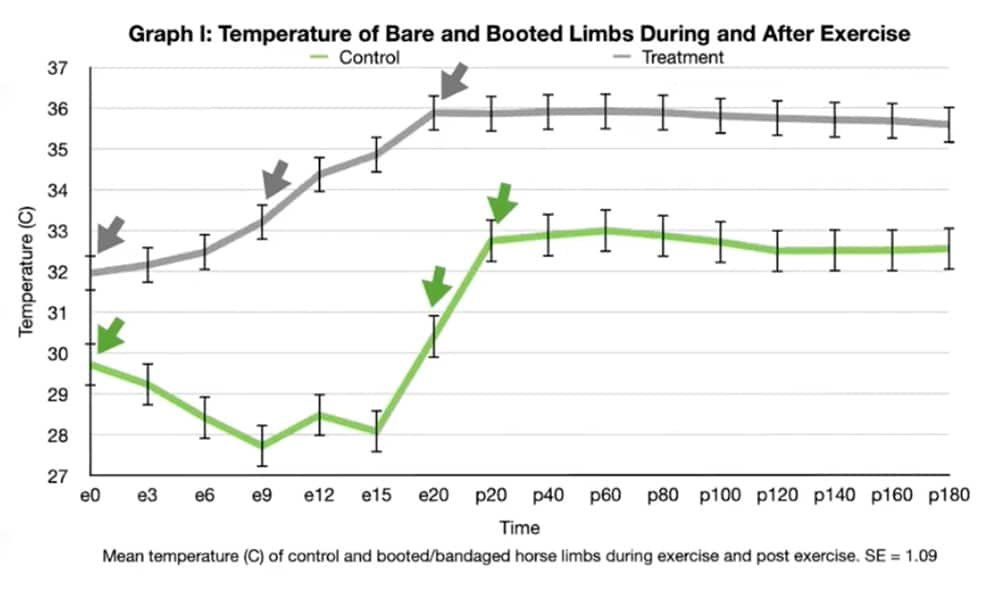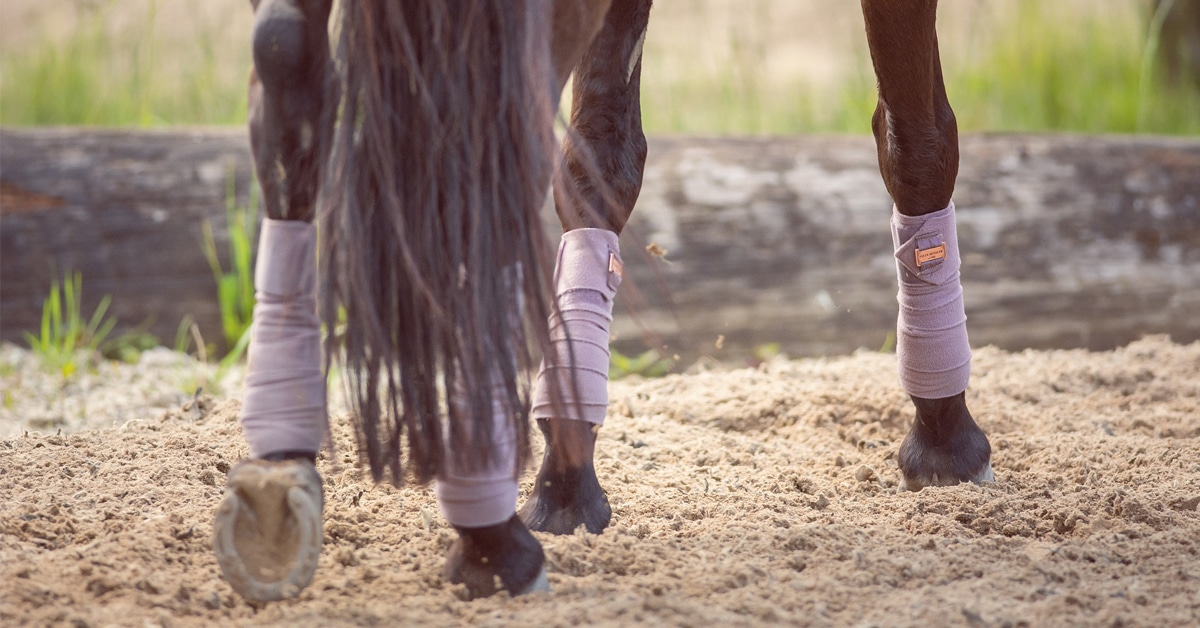A horse is usually warm and sweaty under his tack to some degree after a workout. And, if he’s wearing boots or wraps, he’s probably pretty muggy under there, too. But did you know studies have shown everyday protective legwear can make a horse’s lower limbs hot enough to cause tendon damage?
Wanting to learn more, a team of Middle Tennessee State University horse science program researchers set out to explore leg surface temperature during and after exercise when horses wore commonly-used leg protection. They hypothesized the boots and wraps would increase temperatures compared to a bare lower limb during workouts, but show differences in the time required to return to baseline temperatures. However, the scientists were surprised by some of the results.
The team’s findings were presented at the 2021 Equine Science Society Virtual Symposium last spring by lead author, graduate student Lucas Brock, who started by explaining that, due to a lack of muscle below the knee or hock, the horse’s bare lower limb during exercise is highly efficient, aerodynamic and self-cools through convection – the process by which heat is carried away from the body via moving air.
Brock said various factors of temperature and humidity create a “microenvironment” between a boot or bandage and the horse’s skin, including: material permeability, legwear design and application, heat produced during exercise, ambient temperature, humidity and air exchange rate. Previous research has proven legwear creates an insulating effect on the limb and that the rate of heat dissipation depends on the makeup of factors in a particular microenvironment.
Also, he added that the core temperature of the superficial digital flexor tendon (SDFT) in the lower leg is higher than that of the skin and is hypovascular (lacking blood vessels) “so there’s minimal thermal [heat] loss via the bloodstream.”
That means convection cooling of the SDFT is extremely important, especially considering cell death occurs above 42.5°C, cells are negatively affected at or above 40°C for five minutes or more, and critically, the SDFT’s core is typically 5.4°C higher than its periphery.
Both Expected and Surprising Results
For the study, six adult horses tested six types of leg protection:
- Neoprene boot;
- Perforated neoprene boot;
- Alternative neoprene boot (made of Stomatex material)
- Cross-country boot;
- Elastic track bandage (polo wrap and elasticon-type material)
- Polo wrap.
One foreleg served as the treatment limb, the other as a control. Data was reported every minute through a small button-type temperature/humidity logger (iButton hygrochron) which was attached to each lower leg using perforated surgical tape. Ambient temperature and humidity were also recorded every minute using an indoor/outdoor gauge by the minute. Two times a week for three weeks, the horses did 20-minute walk-trot-lope exercise sessions followed by 180 minutes of standing recovery in a stall.

As expected, the temperature of the bare lower limb dropped during exercise due to convection cooling. It went to a low of 27.7°C, nine minutes into the session before rising, peaking at 33°C and plateauing at that temperature during recovery. The holding pattern was a surprise to researchers. Meanwhile, also as expected, temperature of the treatment limbs increased steadily during exercise until it plateaued at 36°C at minute 15 where it remained through recovery.
As expected from previous research results, convection cooling caused the temperature of the bare lower limb to drop during the workout. It was at its lowest (27.7°C) at nine minutes into the session, then peaked and plateaued (33°C) during recovery. “Although,” he added, “it was surprising to see temperature and humidity unchanged during recovery in as much as 180 minutes.”
Treatment (booted or bandaged) limbs increased in temperature during exercise (from 32° to 36° C at minute 15) and, like the bare limb, plateaued during recovery. All treatment temperatures were greater than the bare limb across all times.
The polo wrap was hotter and more humid than the other treatments, while the alternative neoprene – with Stomatex’s bubble-type composition – was cooler but was also looser fitting, which may have had an effect, said Brock. Otherwise, there was little difference in temperature and humidity results between the six boots and bandages.
The study supports the hypothesis that a limb wrapped in a boot or bandage undergoing moderate intensity exercise in moderate ambient conditions during exercise may reach tendon-damaging temperatures by preventing convection cooling. However, contrary to the researchers’ hypothesis, because no treatment limb nor bare limb returned to baseline temperature or humidity after the recovery period, Brock said further research is needed to investigate the time required for post-exercise passive cooling as well as strategies to reduce cooling time.
“Booting or bandaging your horse is a risk-versus-reward situation,” he said, adding that riders should take into consideration the ambient conditions, workload intensity, the horse’s locomotion tendencies and boot and bandage design and materials.
His advice to owners: “The best way to protect your horses is to remove that leg protection as soon as possible and then cold hose those limbs.”

